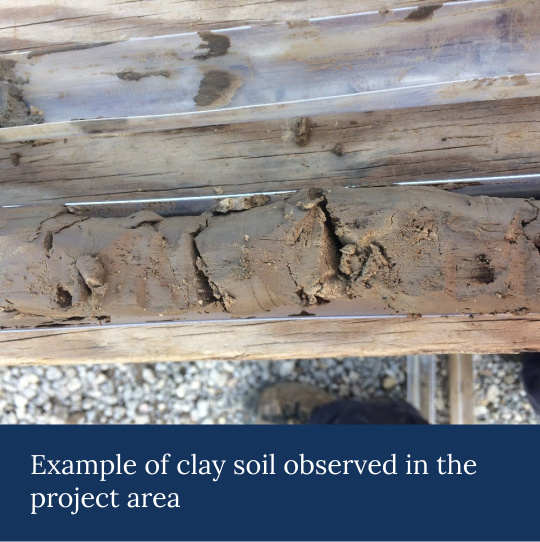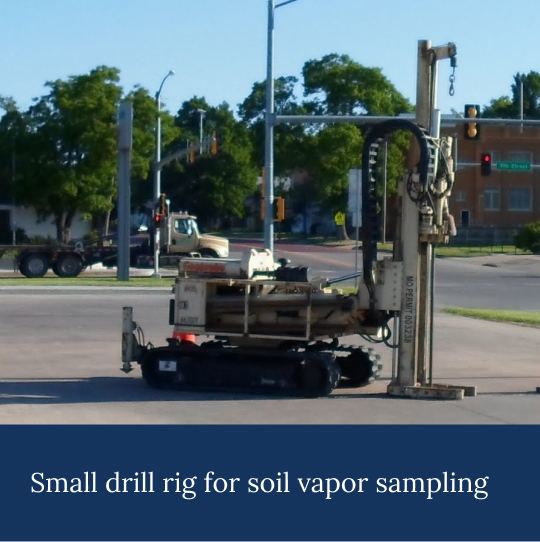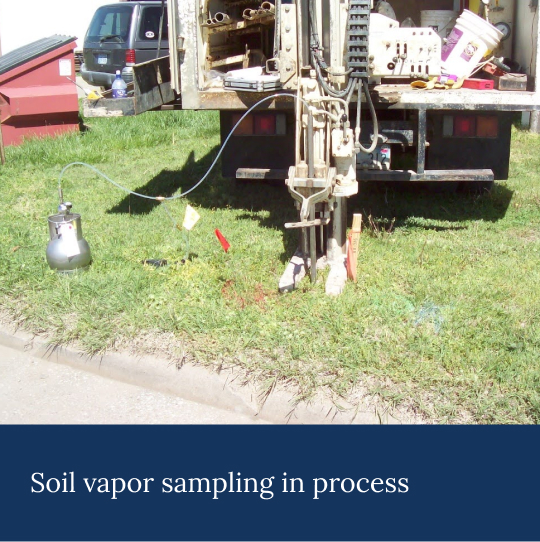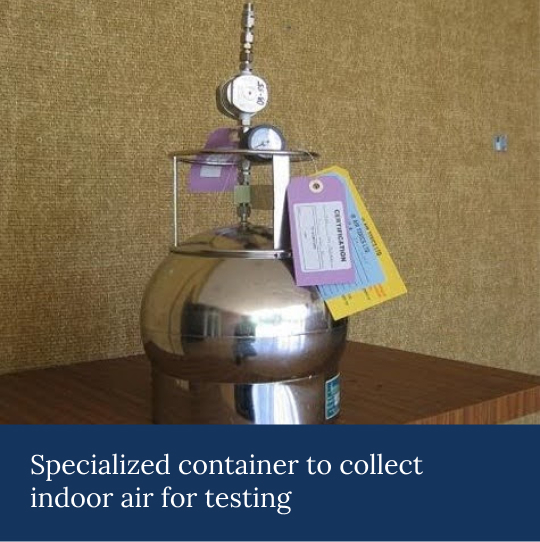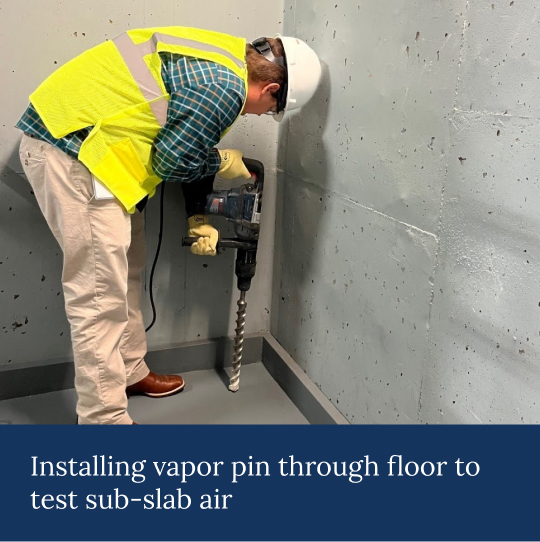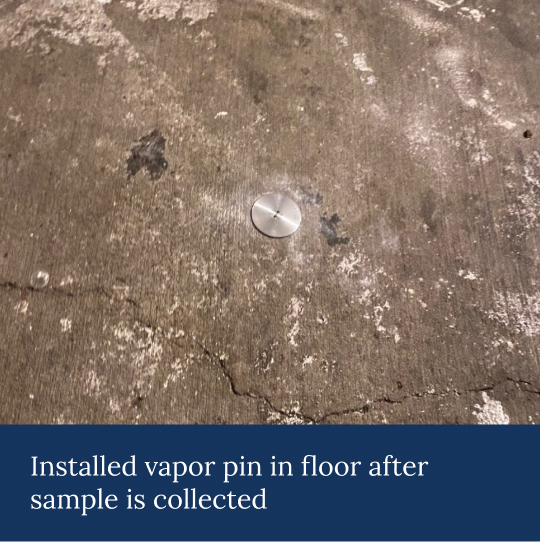Vapor Intrusion Testing Process
The vapor intrusion testing process is a comprehensive approach to identifying and addressing the potential for pollutants to enter indoor air. We are currently in the indoor air sampling phase of this process.
The testing process typically involves the following steps:
Site Assessment: Conditions must be evaluated before testing can begin. In this project, the clay soil observed in the area suggests the presence of low-permeability soil. This means the soil is tight, with few spaces for air or water to move through, which can limit the movement of vapors below the surface.
Soil Gas Testing: This method checks for gases in the soil above the groundwater level. A small drill is used to install vapor probes at various depths within the soil. Specialized equipment and techniques are then employed to collect soil gas samples that accurately represent the subsurface conditions. These advanced tools and procedures help confirm that the samples are typical of the area being tested, providing reliable data for analysis.
Indoor Air Sampling: This process measures the levels of contaminants in the air inside a building. A specialized container is used to collect these air samples effectively.
Sub-Slab Sampling: This method checks for gases entering a building through its foundation. It involves placing vapor pins or probes under the building’s slab or basement floor to collect air samples from just below the slab.
Sample Analysis: The collected soil gas, indoor air, and sub-slab air samples are sent to an accredited laboratory for analysis. The results are compared to regulatory screening levels or risk-based concentrations to evaluate the potential for vapor intrusion, and then reported to the Kansas Department of Health and Environment.
Mitigation and Monitoring: If vapor intrusion is identified as a concern, appropriate mitigation measures may be implemented to reduce or eliminate the vapor intrusion pathway. Ongoing monitoring is typically conducted to evaluate the effectiveness of any implemented mitigation measures.

